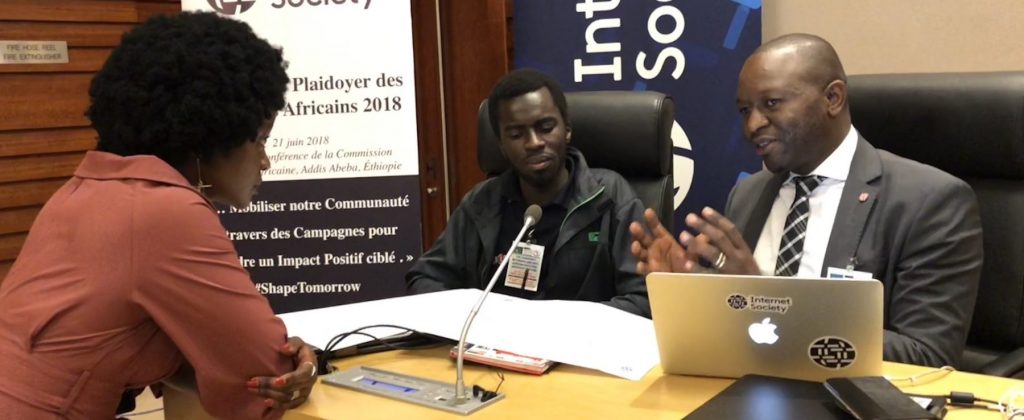0

When and where
The 2019 African Chapters Advocacy Meeting will take place from 8-11 April 2019 in Addis Ababa, Ethiopia alongside an Internet of Things (IoT) Security and Privacy Engagement Workshop with the Africa Union Commission (AUC), the Africa Telecommunication Union (ATU), the Regional Economic Commissions (RECs), and other partners.
Why we are doing
this
In 2019, the Chapter workshops/Advocacy meetings are our main vehicle to mobilize, strengthen, and engage our Chapters and SIGs around our 2019/2020 focus areas and initiatives. We believe that these meetings represent a unique opportunity to define concrete roles for our Chapters/SIGs to work with us on our global initiatives, and create local impact: “Think global, act local.” It is an opportunity to collect inputs from our regional community for future planning and priorities: “From Local to Global.”
How we are doing
it
The Chapters meeting, which will mobilize, empower, and engage 30 fellows from 26 Internet Society African chapters and one global SIG to advance the Internet Society 2019 work in the Africa region with a special focus on “Building Trust” (IoT Security Campaign, Privacy & Personal Data Protection, Encryption, User Trust, and Internet Restrictions).
This meeting is also an Continue reading

 “In less than a year, here is a new PaaS with really cool features and nearly matching what we...
“In less than a year, here is a new PaaS with really cool features and nearly matching what we... Lean NFV says "current NFV efforts are drowning in a quicksand of complexity," and proposes a...
Lean NFV says "current NFV efforts are drowning in a quicksand of complexity," and proposes a... The OpenDaylight project recently released its tenth iteration, adding support for optical...
The OpenDaylight project recently released its tenth iteration, adding support for optical... The Open Platform for NFV now includes virtual network function compliance testing in conjunction...
The Open Platform for NFV now includes virtual network function compliance testing in conjunction...
 Both carriers are this week launching commercial 5G networks that work on 5G smartphones, but only...
Both carriers are this week launching commercial 5G networks that work on 5G smartphones, but only... The Project Eirini work also calls into question the future of Cloud Foundry's Diego container...
The Project Eirini work also calls into question the future of Cloud Foundry's Diego container...